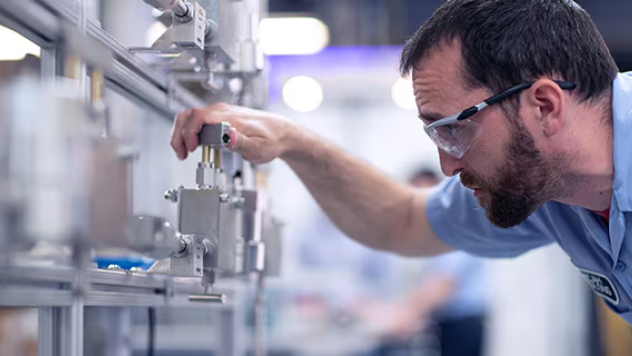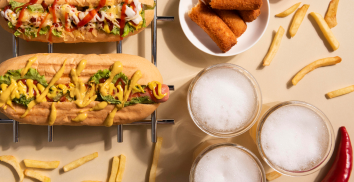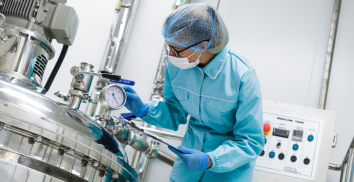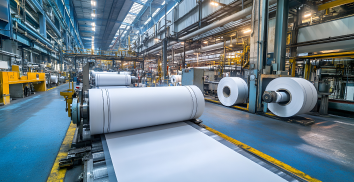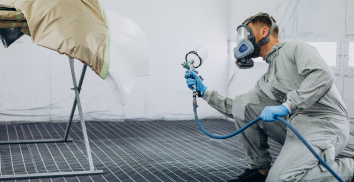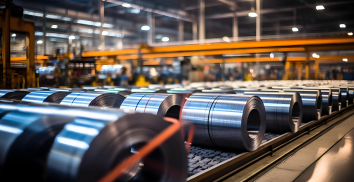Sampling Low-Viscosity Liquids
Low-viscosity liquids, such as water, milk, alcohols, and some oils, are fluids with low resistance to movement because they are less thick or sticky.
(1).png)

By Charles Pandian
Low-viscosity liquids, such as water, milk, alcohols, and some oils, are fluids with low resistance to movement because they are less thick or sticky. They are often used as solvents and emulsifiers in various industries, including food, pharmaceutical, and chemical industries. Because of their widespread use, they need to be sampled quite frequently.
Over the years, various liquid sampling methods and tools have been developed. At Jetspray, we’re experts in process sampling solutions. To help the community grow and our customers precisely sample the various liquids they use in their operations, we’ve created this blog that highlights some common procedures and tools that can be used for liquid sampling. As a bonus, we’ve also included a list of errors to avoid when handling process sampling equipment.
So, without further ado, let’s begin!
Sampling Procedures & Methods
Here are some common low-viscosity liquid sampling procedures:
1. Grab sampling
Commonly known as manual sampling, a single sample is taken at a specific time and location using beakers, bottles, pipettes, or syringes. This method is ideal for quick quality checks.
2. Composite sampling
Multiple samples are collected from the same process at different times or different locations. This method is generally used to monitor process consistency or track method progress.
3. Continuous sampling
Samples are continuously taken from the process using an inline or bypass system. The process usually utilizes auto-samplers and is ideal for automated QC or real-time process monitoring.
4. Dipping sampling
A clean bottle, ladle, syringe, or vial is directly immersed in the liquid to remove a sample. Generally, this process is used in environmental monitoring and not in food, chemical, and pharmaceutical industries.

5. Inline sampling
Probes are inserted into the flow path of the liquid to draw samples. The method is often used for liquids where environmental exposure is not allowed, such as vaccines and beverages.
The type of liquid sampling method used generally depends on the contamination risk of the entire batch and the sample volume required. For example, when the quality needs to be sampled at regular intervals, composite sampling or inline sampling is used. Furthermore, each process requires different types of sampling equipment.
Common Sampling Tools
Here are some common liquid sampling tools used in the industry:
- Sampling bottles: They’re commonly made of glass or plastic, have airtight caps, and are used for grab and manual sampling.
- Pipettes: They’re made of plastic or glass and are used when an exact volume of liquid needs to be sampled.
- Syringes: They’re generally made of plastic and are used with sampling ports for small sample volumes.
- Ladles and dippers: They’re ideal for sampling from open vessels and are used when large volumes need to be sampled.
- Beakers: Generally made of glass, they’re used when sample sterility is not a criterion.
- Auto-samplers: They’re programmed to collect samples at specific time intervals. They are available in various sizes, pressures, and vacuumed.
- Inline sampling probes: They’re inserted directly into process or flow lines for sampling the liquid.
- Dip tubes, glass thieves, zone samplers: They extend into the tank or vessel and are used to withdraw samples from specific depths in the vessel.
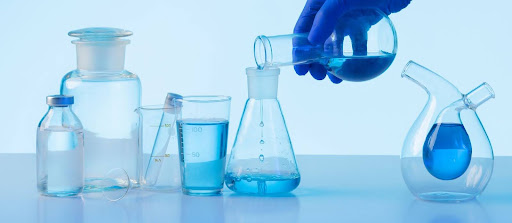
Depending on your equipment, you may also need sampling ports to help you obtain liquid samples. Jetspray offers a range of sampling ports. Our easy-to-use, practical, well-designed, and sturdy sampling ports are perfect for all industries. Check out our solutions:
- Sampling ports for ANFDs, RCVDs, and reactors
- Sampling ports for FBD bowl, blenders, and bins
- Sampling ports for Auto-coaters
- Sampling ports for small vessels and process piping
Handling & Storage: Common Errors to Avoid
1. Improper storage
One of the most common errors is the lack of appropriate facilities to store sampling equipment. Inadequate racks can result in equipment falling, resulting in cracks or breaks. Additionally, poor storage design can also put pressure on delicate parts of the equipment, for example, pipette nozzles, which can break, leading to equipment loss.
2. Delayed cleaning
All equipment needs to be cleaned immediately after use to ensure residues do not build up. Additionally, appropriate cleaning agents should be tested and selected. Failure to do both can result in chemical interactions and contamination. Definitive SOPs should be developed and followed for all equipment.
3. Combined cleaning
Another common error is that users often clean all equipment at the same time in the same vessel using the same cleaning agent. However, this may create cross-contamination. For example, pipettes used to sample oil can transfer oil to pipettes used to sample water when cleaned using the same solution. Hence, equipment should be separately cleaned.
4. Skipping inspection and calibration
Another common error in most laboratories is skipping inspection and calibration. While large equipment like reactors and weighing machines are often calibrated, smaller ones like syringes, pipettes, valves, etc., are skipped because it is ‘assumed’ that they’re well calibrated and don’t need recalibration. However, this can result in sampling errors.
5. Incorrect handling
Sample equipment often has areas that should not be touched with bare hands, as it can introduce particulates and microbes during sampling. However, many disregard or are unaware of equipment handling guidelines, which can result in sampling errors. Users should follow manufacturers’ instructions on sample handling.
How to Select?
Liquid sampling tools are critical for all processes, whether it be QC or R&D. Therefore, you need to prioritize purchasing high-quality, durable, and compliant equipment from manufacturers who can guarantee its benefits. At Jetspray, we strive to do exactly that. We offer a range of sampling and cleaning equipment that is compatible with all process tools and vessels. We can help you find the liquid sampling tools ideal for your facility. Reach out to our experts today to learn more.
Share on
Tags: Process Cleaning Equipment


